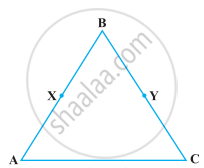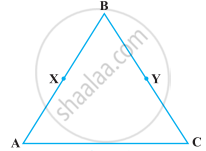Advertisements
Advertisements
Question
It is known that if x + y = 10 then x + y + z = 10 + z. The Euclid’s axiom that illustrates this statement is ______.
Options
First Axiom
Second Axiom
Third Axiom
Fourth Axiom
Solution
It is known that if x + y = 10 then x + y + z = 10 + z. The Euclid’s axiom that illustrates this statement is second Axiom.
Explanation:
The Euclid’s axiom that illustrates the given statement is second axiom, according to which. If equals are added to equals, the wholes are equal.
APPEARS IN
RELATED QUESTIONS
Give a definition of the following term. Are there other terms that need to be defined first? What are they, and how might you define them?
perpendicular lines
How many planes can be made to pass through a line and a point not on the line?
How many planes can be made to pass through three distinct points?
The number of dimension, a point has ______.
Boundaries of solids are ______.
Pythagoras was a student of ______.
The boundaries of the solids are curves.
Solve the following question using appropriate Euclid’s axiom:
In the following figure, we have AB = BC, BX = BY. Show that AX = CY.

Solve the following question using appropriate Euclid’s axiom:
In the following figure, we have BX = `1/2` AB, BY = `1/2` BC and AB = BC. Show that BX = BY.

Solve the following question using appropriate Euclid’s axiom:
In the following figure, we have ∠ABC = ∠ACB, ∠3 = ∠4. Show that ∠1 = ∠2.

